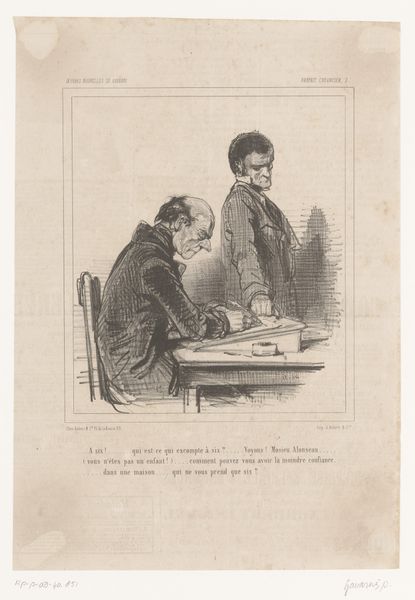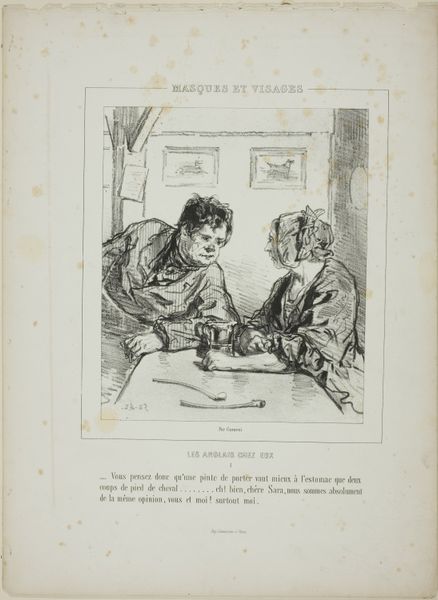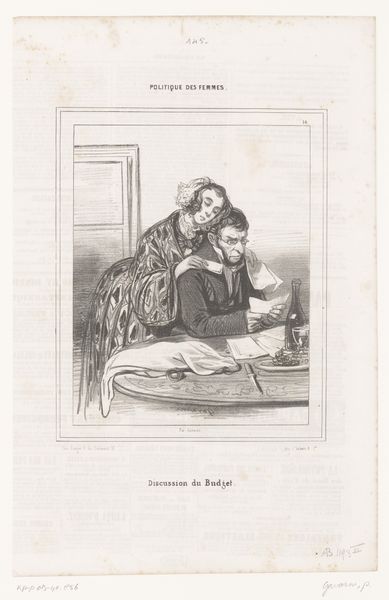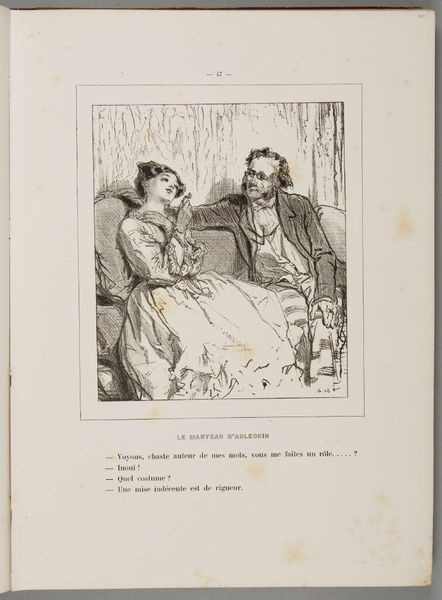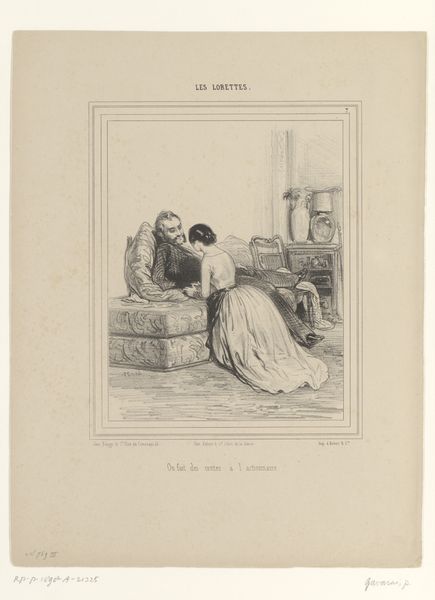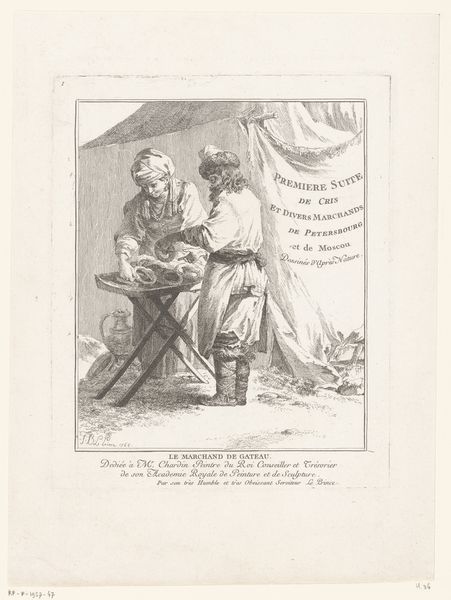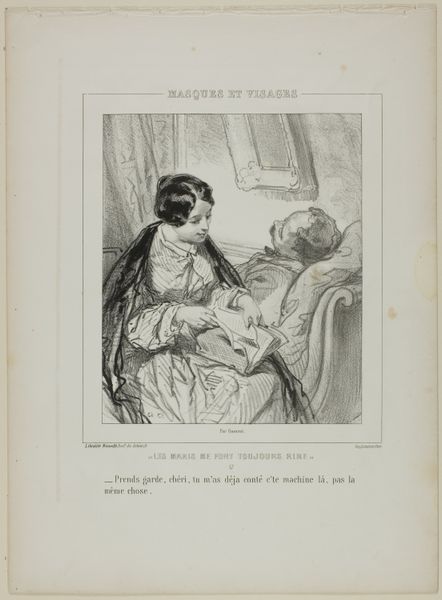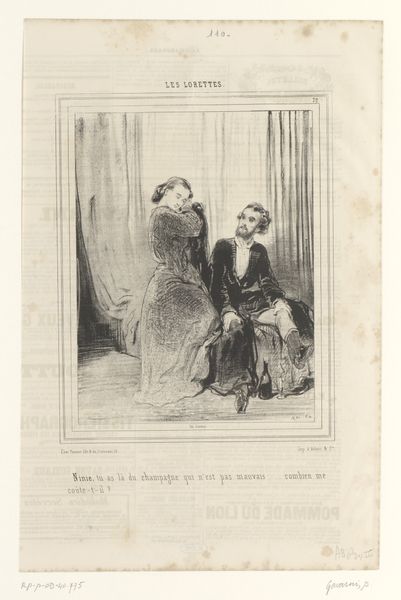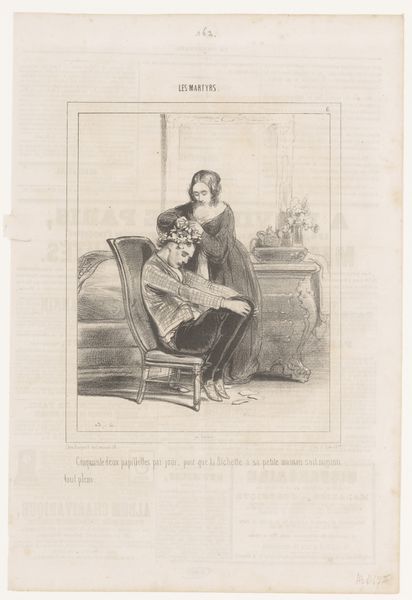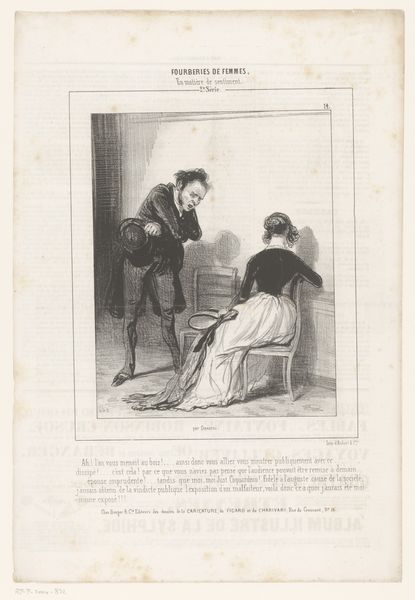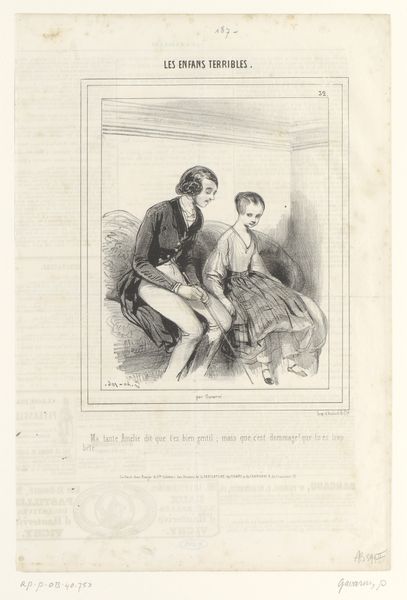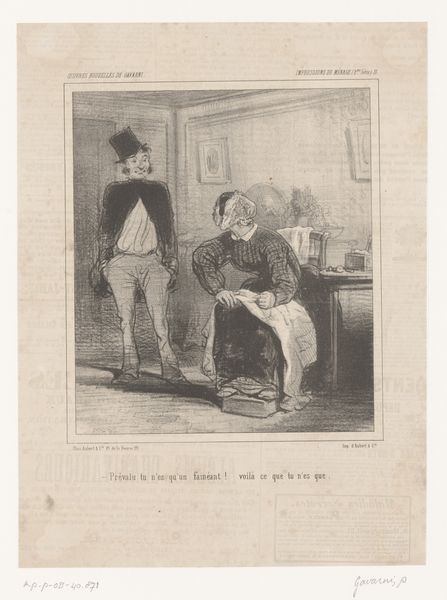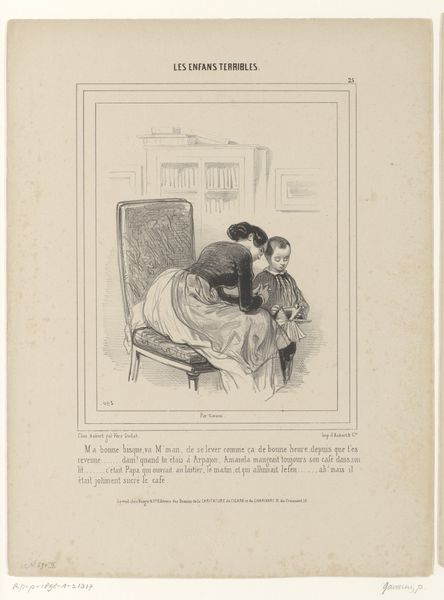
Les maris me font toujours rire: Item, pour avoir montré, au bal de la Préfecture... 1853
0:00
0:00
drawing, lithograph, print, paper
#
pencil drawn
#
drawing
#
aged paper
#
toned paper
#
light pencil work
#
lithograph
#
ink paper printed
# print
#
pencil sketch
#
paper
#
personal sketchbook
#
france
#
watercolour illustration
#
pencil art
#
watercolor
Dimensions: 218 × 186 mm (image); 365 × 268 mm (sheet)
Copyright: Public Domain
Curator: Paul Gavarni created this lithograph, a print on paper now residing at the Art Institute of Chicago. It’s titled “Les maris me font toujours rire: Item, pour avoir montré, au bal de la Préfecture…", and was made around 1853. The lithograph features figures rendered in light pencil work. What are your initial impressions? Editor: Well, my eye is immediately drawn to the pair of figures and their seemingly troubled expressions. There's a palpable sense of unease in the scene, almost a silent drama unfolding between them. The light, airy style only emphasizes the subtle emotional complexities. Curator: Gavarni was quite skilled at capturing these social dynamics. The piece likely critiques bourgeois marriage and gender roles in mid-19th century France. We have a stylish gentleman with what is likely a younger kept woman at her desk writing or keeping accounts. The social expectations for them would be immense. Editor: The imagery here is fantastic for unpacking power dynamics of the era. The woman looks up at him in an imploring way, her face is open and inviting. However, the gentleman looks almost menacingly down, as if weighing how things are playing out. It’s fascinating how Gavarni captured a societal issue within the constraints of an image. The semiotics are pretty deep here, what does “Item, for having shown, at the ball of the Prefecture… the particular sign that Madame has in her back…” mean in relationship to their power? It speaks volumes about coded interactions. Curator: Indeed. And think about the context – France still reeling from revolution and social upheaval, the rise of a new, insecure bourgeoisie clinging to status symbols. Gavarni dissects all that, and it must have really hit nerves among his viewership. His sharp observation fueled the emotional charge behind his work, making it both a social commentary and entertainment. Editor: Absolutely. I love the candelabra in the background. It serves a greater purpose than being mere decoration. Curator: Agreed, it subtly underscores that their roles and places in this home have been purchased. Gavarni doesn’t simply present a pretty picture, he's really laying bare societal pressures that informed 19th-century relationships. Editor: It leaves me thinking about what parts of these power imbalances continue today in less blatant forms. The semiotics of everyday gestures of couples in a restaurant still speak. Curator: I agree! So many visual relics carry a story and, frankly, so many are similar!
Comments
No comments
Be the first to comment and join the conversation on the ultimate creative platform.
